How to plant daffodil bulbs – when, where and how to plant and grow daffodils
Learn how to grow and plant daffodil bulbs to enjoy beautiful spring displays of these reliable backyard favorites year after year
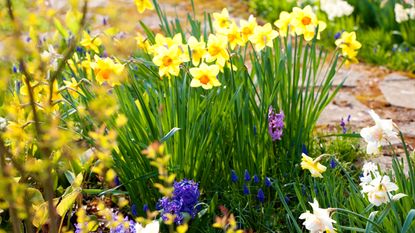

Learning how to plant daffodil bulbs and grow daffodils is a must for any gardener who wants to see their backyard spring back into life when winter is nearing an end. The sight of masses of the cheery flowers is sure to lift your spirits.
Among the most recognisable perennial bulbs, daffodils is the common name of the backyard forms of the genus narcissus, which has more than 50 species and 25,000 varieties.
There are thousands of cultivars and great diversity in the shapes and colors of daffodils, from the common yellows, to pastel pinks and white.
There are many different forms of daffodil flowers, too, such as trumpet, large-cupped, single, double or split-corona – so why not try growing different varieties in separate areas of your yard as one of your flower bed ideas?
How to grow daffodils in your backyard

By carefully choosing and learning how to grow daffodils of different varieties, you can have early to late flowering blooms and enjoy the show from February through to May.
The dwarf varieties look fabulous lining paths or in containers, while at the other end of the scale are giant daffodils with their golden nodding blooms that can create a big impact in beds and borders.
‘When mixing daffodils, check the flowering heights to avoid the taller cultivars swamping dwarf cultivars,' suggests Becky Mealey, RHS horticultural advisor.
As a bulbous perennial, daffodils will keep coming back year after year and will slowly spread, so choose an area to plant them where you want them to naturalize. Planting snowdrops and daffodils with other spring bulbs in the same area can produce wonderful results.
What is the best month to plant daffodil bulbs?
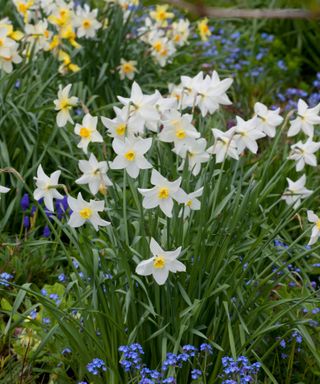
You should plant daffodil bulbs from early fall. Like all flowering bulbs, if you are growing daffodils they need a cold period to develop their roots and get ready for spring.
'Plant the bulbs when grounds have cooled, in some climates September and for warmer climates in November,' advise the experts at the The American Daffodil Society.
For a succession of varieties that flower at different times, you could plant a series of bulbs from late August to early November.
‘September to October is the best time for planting narcissi, while the soil still has a bit of summer warmth. The flowering times are usually indicated on the packet or plant profiles,’ recommends Becky Mealey.
If you can't wait until spring is nearing to enjoy these cheery flowers, then you could always learn how to force bulbs to enjoy them in the dead of winter, too.
Are daffodils easy to grow?
Daffodils are easy and fuss-free to grow. Narcissi can be grown in beds and borders, naturalized in grass, planted in pots or planters, and will keep coming back year after year with little care and attention needed.
Where to plant daffodil bulbs
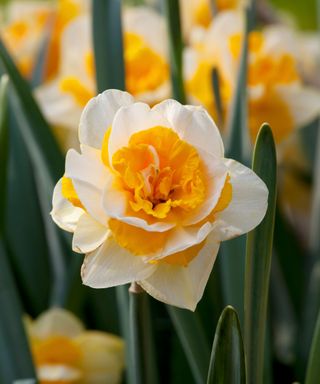
Scattering bulbs and planting where they fall will give you a natural look in lawns, meadows, on banks or in beds. Bold drifts in beds and borders give impact, and clumps under trees with a cascade of blossom confetti look charming. They are also wonderful for filling gaps between shrubs and plants in herbaceous beds. This is definitely not a less is more flower.
One of the most important points to remember where learning how to to grow daffodils is to choose a well-drained soil. 'Drainage is key,' agree the American Daffodil Society experts.
All varieties of narcissus prefer moderately fertile, well-drained slightly acidic soil, with most preferring sunny spots and some light shade.
They need plenty of sunlight to grow, are tough, but hate getting their feet wet so don’t let them bathe in water in soggy soils as they will rot. One way to avoid this is by planting them on a bed of grit, 'as this prevents them sitting in water,' advises Monty Don in a video for Gardeners' World.
How to plant daffodil bulbs
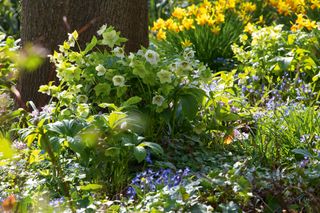
A very important point to be aware of when learning how to plant daffodils is that the sap from the plants can irritate your skin, so wear gloves when planting the bulbs.
Always choose firm, large daffodil bulbs and plant them deep enough that they are not affected by temperature variations.
The rule is generally to dig your holes at least three times as deep as the bulb is high, using a hand trowel or bulb planter. 'Plant bulbs deeper in sandy soil than in clay,' advise the American Daffodil Society experts.
'When growing daffodils, you need to plant the bulbs deep because they will develop better, and also then there is less likelihood of you digging them up,' explains Monty Don.
Plant the bulbs deeper in lawns, at about 6 inches (15cm).
Place the bulb at the bottom of the hole with its pointy end up, spaced about 4-5 inches (10 to 12 cm) apart so they don’t compete for nutrients in the soil.
Most bulbs will produce one to three flowers the first spring, however, 'if they do not bloom in one season, it might be best to move them to a new location,' says the American Daffodil Society.
How to grow daffodils from seed
Daffodils spread by producing seed and pollen, which is dispersed giving rise to new flowers and also by the bulb dividing and cloning itself after about three to five years.
If you want to try growing from seed, then rather than deadheading flowers, leave the seeds to ripen, sow them and then you will need to wait a few years before they flower.
Growing daffodils in containers
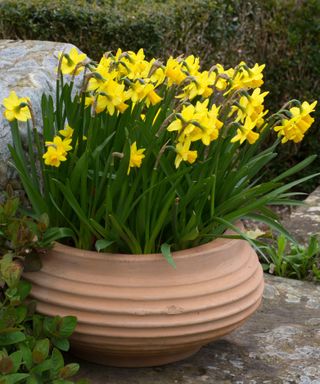
Growing daffodils as one of your container gardening ideas is straightforward, and they can be layered for a succession of blooms, or lasagne-planted with other spring bulbs that will flower at different times.
To grow daffodils in pots:
- Make sure the container you choose is deep enough to accommodate the bulbs.
- Drainage is key, as bulbs will rot if water logged, so choose a container with drainage holes and put some gravel or broken pieces of terracotta pots at the bottom.
- Fill half the pot with loamless, peat-free compost, and spread the bulbs evenly over the surface, pointy end up.
- Space bulbs about 2 inches (5 cm apart), as they can be closer in a pot than in the ground to give a full look.
- Top up with compost and top-dress with mulch.
- It is a good idea to raise your pots on bricks or pot feet to ensure free drainage and air to circulate.
- Water them well, but do not feed the daffodil bulbs.
- Keep the container in a dark, cool spot for about 12 to 15 weeks or bury the pot in the ground, then move it into a sunny but cool spot and water them.
- Once the leaves appear, move the container into direct sunlight but still in a cool spot, and water if dry.
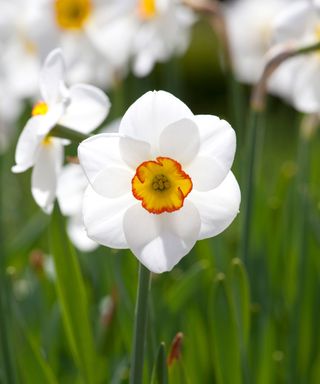
‘My top tip for planting daffodil bulbs in a pot is to place the bulbs out like the face of a clock, starting with 12, 6, 3 and 9 to get your display all evenly spaced and looking good on all sides,’ says Becky Mealey.
Layering the same or different varieties, or with other bulbs, two or even three layers, will prolong the display.
When the flowers fade on daffodils in containers, snip them off but let the foliage die down. They will continue to flower for about three years, but it's a good idea to remove the bulbs from the pot and replant them in the ground to make a fresh display for each spring.
How to care for daffodils
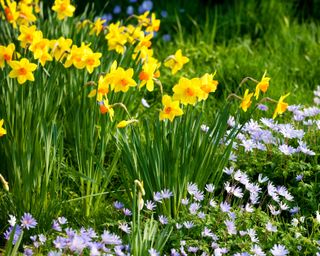
Easy to care for, daffodils will last for years and years. Preserve the strength of the bulb by deadheading spent blooms, nipping off at the neck behind the seedpod, and allowing the foliage to die down naturally.
'Daffodils need lots of water,' says the American Daffodil Society experts, so keep them moist during the growing season and fertilize daffodils after flowering with a low nitrogen feed for a good show next year.
If you have mastered the art of how to divide plants, you can lift and divide overcrowded clumps in late June or July, or in fall and replant straight away.
If you are cutting blooms for vase displays, be aware that the sap is toxic and can make other flowers wilt, so display them separately to other blooms, or put them in water on their own for 24 hours, and then mix with other flowers in a vase.
Good companion plants for daffodils

Companion planting daffodils can create a wonderful display. Daffodils combine with the first of the tulips, contrast dramatically with violet muscari, bright blue scilla or iridescent hyacinths, and look attractive popping up through spring bedding, such as polyanthus, bellis and erysimum.
Planting bulbs under deciduous trees is a natural choice. From glorious prunus and malus blossom to the range of magnolias, you are assured of a reliable and colorful display.
Do daffodils grow back year after year?
Daffodils should grow back year after year. They will naturalize and the display will get better from one year to the next, making them great value bulbs to buy.
'Daffodil bulbs should continue flowering year after year, so it's worth taking care when planting them,' explains Monty Don.
How to store daffodil bulbs
Daffodil bulbs can be stored anywhere cook, dry and out of direct sunlight and temperature fluctuations. This might be in a cellar, garage or even in a drawer in a cool room indoors.
Sign up to the Homes & Gardens newsletter
Design expertise in your inbox – from inspiring decorating ideas and beautiful celebrity homes to practical gardening advice and shopping round-ups.

Leigh Clapp is a professional photographer with over 25 years experience, primarily as a garden specialist photojournalist but also with food and travel. She delights in exploring gardens, discovering the tiny elements to their overall essence and meeting lots of enthusiastic gardeners along the way. Leigh’s work appears in magazines, newspapers and books, both in the UK and abroad, including Period Living, Country Life, and Gardens Illustrated; as well as being sole photographer for a number of books, including Garden Details, Feng Shui in the Garden, Vertical Gardens and From the Garden – fresh seasonal cooking.
-
 Benny Blanco's bathroom taps into a bold trend that will be everywhere in 2024 – it artfully blends classic and modern design
Benny Blanco's bathroom taps into a bold trend that will be everywhere in 2024 – it artfully blends classic and modern designThe bathroom in the songwriter's home is pure art. Lucky for everyone, the look is trending – and designers can't get enough of its maximalist aesthetic
By Sophie Edwards Published
-
 These 5 light-boosting hacks will bring more natural light into your home
These 5 light-boosting hacks will bring more natural light into your homeSomber rooms? Use these clever light-boosting hacks from the pros to brighten your home
By Sarah Warwick Last updated
-
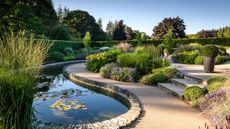 Water garden ideas – 9 ways to introduce soothing water to your outdoor space
Water garden ideas – 9 ways to introduce soothing water to your outdoor spaceFrom cascading fountains to wildlife ponds, there are plenty of ways to create a tranquil water garden
By Leigh Clapp Published
-
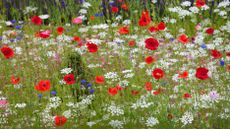 How to grow poppies
How to grow poppiesFind out how to grow poppies to enjoy the beauty of these brightly colored tissue paper-like blooms
By Leigh Clapp Published
-
 How to grow delphiniums from seed
How to grow delphiniums from seedFind out how to grow delphiniums from seed and enjoy these colorful cottage garden favorites filling beds and borders
By Leigh Clapp Published
-
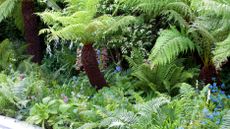 How to grow ferns – when and how to plant and care for them
How to grow ferns – when and how to plant and care for themLearn how to grow ferns to enjoy the texture and form of these versatile plants in many areas of your garden
By Leigh Clapp Published
-
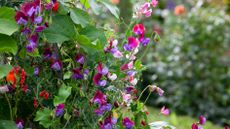 How to grow sweet peas from seed – in borders and pots
How to grow sweet peas from seed – in borders and potsFind out how to grow sweet peas and where to enjoy their wonderful color, ruffled blooms and sweet fragrance in your garden
By Pippa Blenkinsop Published
-
 How to make fat balls for birds – easy steps feed our feathered friends
How to make fat balls for birds – easy steps feed our feathered friendsLearn how to make fat balls for birds to ensure their wellbeing throughout the winter
By Holly Reaney Published
-
 Planning a kitchen garden – from layouts to picking the best crops
Planning a kitchen garden – from layouts to picking the best cropsPlanning a kitchen garden is easy with this expert advice – whether yours is in beds, borders or a dedicated patch – you're guaranteed success
By Leigh Clapp Published
-
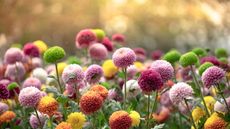 Fall flowers for pots – 10 stunning blooms to add seasonal color and interest
Fall flowers for pots – 10 stunning blooms to add seasonal color and interestExtend your growing season with the best fall flowers for pots – from pretty annuals to hardy perennials
By Melanie Griffiths Last updated